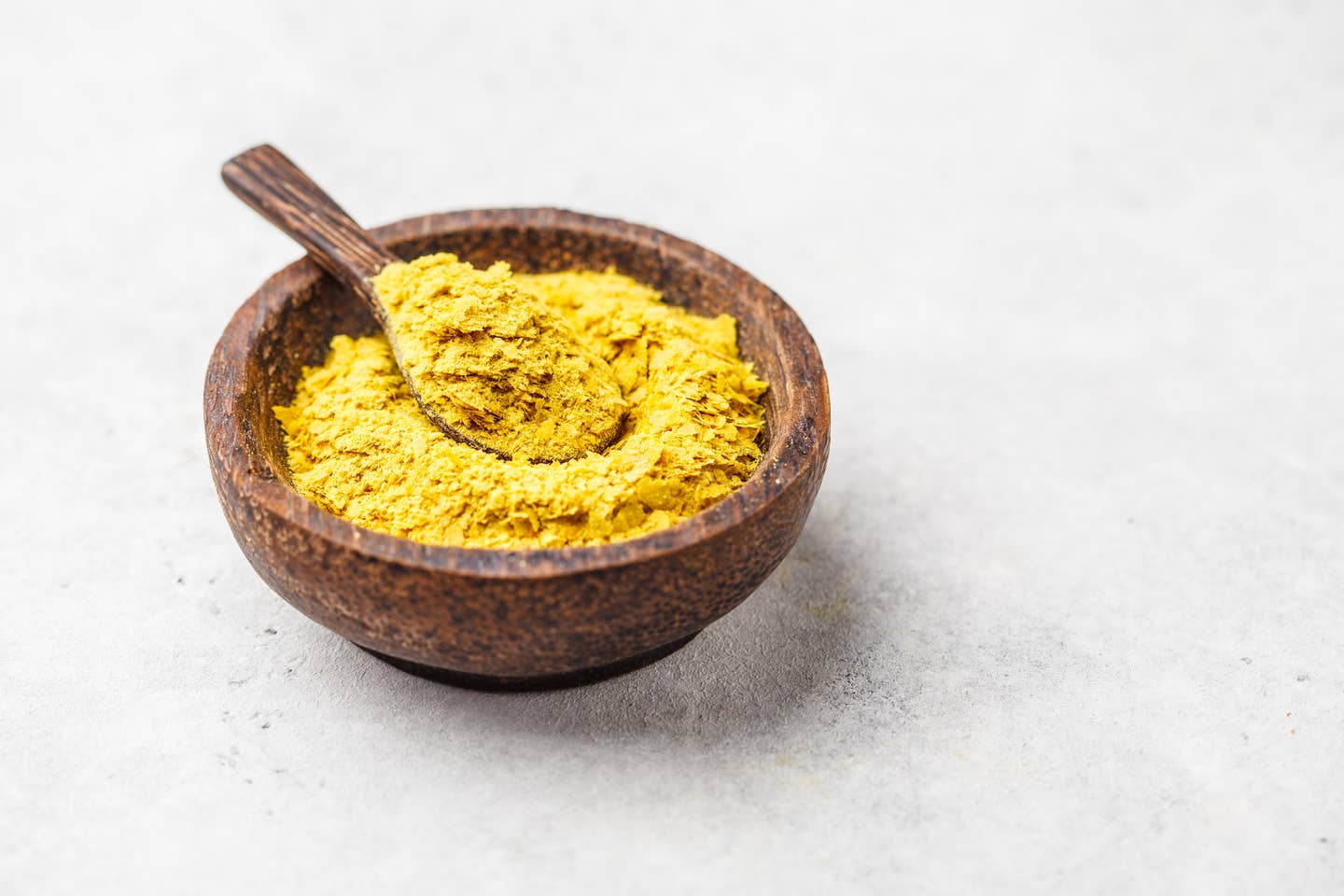
What is Nutritional Yeast? Here Are the Health Benefits
Do you love Parmesan, but are trying to ditch dairy? You’ll probably also dig nutritional yeast. While there’s nothing cheesy in it, nutritional yeast is often described as having a rich cheese-like flavor, one reason you’ll see it used on everything from pasta to popcorn. While it's a great substitute for cheese, nutritional yeast also has tons of health benefits and is packed with vitamins like B12, which can be more difficult to get on a vegan diet.
Although nutritional yeast frequently guests stars in vegan fare, you don’t have to be vegan to eat it. In fact, no matter what your diet, everybody can benefit by shaking a little more of it into their meals.
What is Nutritional Yeast?
Nutritional yeast is a flaky, yellow-colored yeast that typically grows on cane or beet molasses, says Willow Jarosh, M.S., R.D., owner of Willow Jarosh Culinary Nutrition in New York City. Because it’s a deactivated yeast, it’s not alive when you use it in your kitchen. And while it has similar properties as brewer’s yeast, the two are different. If that hasn’t sold you on trying it yet, maybe the nutritional benefits will.
The Health Benefits of Nutritional Yeast
Just two tablespoons of it contain all eight of the B vitamins you need and well over 100 percent of the recommended daily value of five of them, including thiamin, riboflavin, niacin, vitamin B6, and vitamin B12, says Sharon Palmer, M.S.F.S., R.D.N., a plant-powered dietitian in Los Angeles who offers free resources at sharonpalmer.com. And on that B12 note, you’ll get more than a day’s worth of vitamin B12 in those same two tablespoons. B12, which occurs naturally in animal products, is key for vegetarians and vegans, Palmer says. It’s important for regulating blood and nerve cell health and preventing a specific type of anemia, and a lack of B vitamins overall can lead to depression.
Nutritional yeast also contains eight grams of protein and four grams of fiber, namely a type of soluble fiber called beta-glucan which is the main fiber in oats, too. “Beta-glucan helps lower total and LDL cholesterol levels and can lower your risk for heart disease,” says Julie Upton, M.S., R.D., San Francisco-based dietitian and co-founder of Appetite for Health and AFH Consulting.
If you’re looking for amino acids, you’ll get all nine in the powder, says Angela Wortley, R.D.N., dietitian and certified intuitive eating counselor in Ann Arbor, Mich., adding that its chromium may be beneficial for blood sugar control. And don’t forget the zinc; two tablespoons contain 20 percent of your daily value of zinc, Palmer adds.
Just note, though: Nutritional yeast may not be for everybody. “People with health conditions like migraines and inflammatory bowel disease may find that nutritional yeast worsens symptoms, though smaller amounts may be tolerated,” Wortley says. And of course, if you’re sensitive or allergic to yeast products, you should avoid nutritional yeast.
How to Use Nutritional Yeast
Nutritional yeast lovers are fans of this crazy-sounding food for several reasons, starting with flavor. “Nutritional yeast gives a cheesy and nutty flavor to foods,” Wortley says.
In fact, because of its cheese-like flavor, nutritional yeast can be beneficial not only for vegans who are eschewing dairy but even people who can’t tolerate dairy, Jarosh says. It also adds an umami flavor, which has an added benefit. “If you need to reduce your salt intake, nutritional yeast can help you reduce salt without limiting flavor,” she adds. And it’s an easy way to add flavor to vegetables, especially if you don’t like the taste of plain vegetables.
If you want to experiment with the food, Jarosh recommends using it in or on anything that Parmesan cheese might be found in. Start simple and use it as a seasoning for something like scrambled tofu, sautéed greens, or popcorn. And let’s not forget the famous kale chips, which almost always have this yellow powder on them.
Once you’ve gotten the hang of shaking it on foods like pasta, potatoes, and vegetables, you can also use it in sauces, dressing, soups and vegan cheeses, Wortley says. And either by itself or with other seasonings and ingredients like breadcrumbs, it can be a fabulous breading for tofu.
When shopping for nutritional yeast, look for a brand that’s fortified in vitamin B12 (not all are). Then check for it in the bulk section, which is the most cost-effective way to buy it, Wortley says. Can’t find it locally? You can also order it online.
Nutritional yeast might not make national headlines anytime soon, but that’s no reason not to give this flavor-filled, nutritionally dense food a shake. Chances are, it will soon become your favorite kitchen helper.
Make Vegan Parmesan With Nutritional Yeast
Turn nutritional yeast into a Parmesan-like topping with this recipe from Wortley:
Add a quarter cup of nutritional yeast, one cup of walnuts, another cup of nuts like raw cashews or Brazil nuts, and a pinch or two of salt to a food processor. As an option, add a teaspoon of garlic or onion powder. Process until it’s a grainy texture like Parmesan. Just don’t overprocess it or it could turn into a nut butter consistency. Store in an airtight container in the fridge for three to four weeks.
Bottom Line: Nutritional yeast is a delicious, cheesy way to add more vitamins, protein, fiber, and all nine amino acids into your diet.
For more expert tips, visit The Beet's Health & Nutrition articles.
More From The Beet






